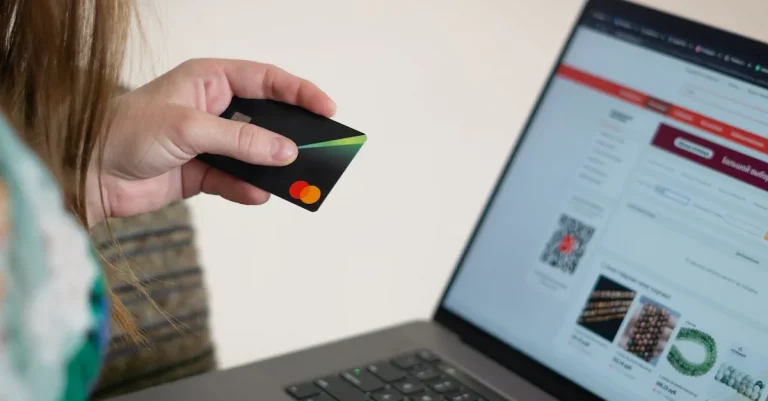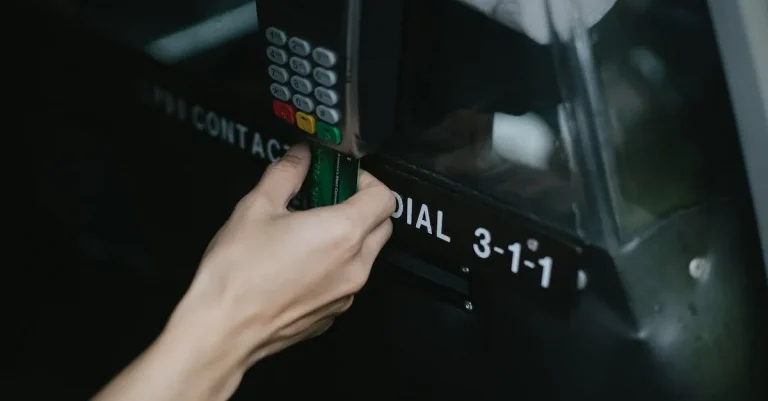Does Ebt Check Your Bank Account? Everything You Need To Know
The Supplemental Nutrition Assistance Program (SNAP), formerly known as food stamps, provides crucial assistance to millions of low-income Americans.
SNAP benefits are distributed monthly through the Electronic Benefits Transfer (EBT) card system, allowing recipients to purchase eligible food items from authorized retailers.
If you’re short on time, here’s a quick answer to your question: No, EBT does not check your bank account balance or transactions. The EBT system only records EBT purchases and deductions.
In this comprehensive guide, we will explain how the EBT card system works, what information it tracks, how balances are replenished monthly, and more. We will also bust some common myths about EBT monitoring recipient bank accounts or assets.
Understanding the EBT System
The Electronic Benefits Transfer (EBT) system is a government program designed to provide assistance to low-income individuals and families.
Through the use of electronic debit cards, EBT allows recipients to purchase eligible food items and access other benefits such as cash assistance and nutrition education.
What is EBT?
EBT is a system that replaces traditional paper-based methods of distributing benefits, such as food stamps and paper checks.
With EBT, beneficiaries receive a plastic debit card, similar to a bank card, which is loaded with their benefits each month.
This card can be used at authorized retailers to purchase eligible items, including groceries and household essentials.
Did you know? EBT benefits are automatically deposited into the recipient’s account on a specified date each month, allowing for a more convenient and efficient distribution process.
How are EBT benefits issued and tracked?
EBT benefits are issued and tracked through a secure and confidential system. When an individual or family qualifies for assistance, their information is verified, and they are assigned an EBT account.
This account is linked to their electronic debit card, and their benefits are automatically deposited into the account each month.
The EBT system also includes a tracking feature that monitors the usage of benefits. Retailers who accept EBT payments are required to maintain accurate records of the transactions made with EBT cards.
This helps ensure that benefits are being used appropriately and within the guidelines set by the program.
It is important to note that while EBT benefits can be used for a variety of essential items, they do have restrictions.
For example, certain non-food items like alcohol, tobacco, and household supplies cannot be purchased with EBT funds. These restrictions are in place to ensure that the benefits are used for their intended purpose – providing assistance for basic needs.
For more information on EBT and its guidelines, you can visit the official website of the U.S. Department of Agriculture’s Food and Nutrition Service.
What Information Does EBT Track?
EBT only tracks EBT transactions
Electronic Benefit Transfer (EBT) is a system that allows eligible individuals and families to receive government assistance benefits, such as the Supplemental Nutrition Assistance Program (SNAP) or Temporary Assistance for Needy Families (TANF).
EBT cards work like debit cards, allowing recipients to purchase eligible food items from authorized retailers.
When it comes to tracking information, EBT only monitors the transactions made using the EBT card.
This means that the system keeps a record of the purchases made with the card, including the store where the transaction took place, the date, and the amount spent.
This information is used for program administration and to prevent misuse or fraud.
EBT does not monitor bank accounts or assets
Contrary to popular belief, EBT does not have access to or monitor individuals’ bank accounts or assets. The system is designed to solely track EBT transactions and does not have the capability to monitor personal financial information.
This misconception may stem from confusion between EBT and other government assistance programs.
For example, some programs may require individuals to provide information about their income, assets, and bank accounts during the application process. However, this information is used for eligibility determination and is not monitored by EBT.
So, if you’re concerned about EBT checking your bank account, rest assured that it does not have the authority or capability to access or monitor your personal financial information.
When and How EBT Balances Are Replenished
For individuals and families who rely on the Supplemental Nutrition Assistance Program (SNAP), also known as food stamps, it is important to understand how and when their Electronic Benefit Transfer (EBT) card balances are replenished.
This ensures that they can plan their grocery shopping and manage their food budget effectively.
Monthly issuance of SNAP benefits
SNAP benefits are typically issued on a monthly basis, with the exact date varying depending on the state. Most states stagger the distribution of benefits throughout the month to prevent overwhelming the system and grocery stores on a single day.
Some states may issue benefits on the first day of the month, while others may distribute them on a specific day based on the last digit of the recipient’s Social Security number or EBT card number.
It is important for SNAP recipients to be aware of their state’s specific schedule for benefit issuance. This information can usually be found on the state’s official SNAP website or by contacting the local SNAP office.
By knowing the date of benefit issuance, individuals and families can plan their grocery shopping accordingly and ensure that they have access to the necessary funds to purchase food.
EBT balances reset after monthly issuance
Once the monthly SNAP benefits are issued, the EBT card balances are replenished. The unused balance from the previous month carries or rolls over up to a certain period.
The specific time frame varies depending on the state, so it is important for individuals and families to use their benefits within the designated time frame.
For example, if a SNAP recipient receives their benefits on the 5th of each month, their EBT card balance will be replenished on that date. This ensures that recipients have access to fresh funds each month to purchase groceries.
It is important for SNAP recipients to keep track of their EBT card balance and plan their purchases accordingly.
This can be done by checking the balance regularly through the EBT customer service hotline, online portals provided by the state, or by saving receipts from each transaction to keep track of the remaining balance.
By understanding the timing and process of EBT balance replenishment, SNAP recipients can effectively utilize their benefits and ensure that they have access to the food they need throughout the month.
Common Myths and Misconceptions About EBT
Myth: EBT checks your bank account balances
One common misconception about the Electronic Benefit Transfer (EBT) program is that it checks your bank account balances.
However, this is not true. EBT is designed to provide assistance to low-income individuals and families by offering them access to essential resources such as food and cash benefits. It does not have the capability to monitor or access your bank account information.
Myth: EBT checks your income and assets
Another myth surrounding EBT is that it checks your income and assets to determine eligibility.
However, this is also false. EBT eligibility is based on specific criteria set by the government, such as income level, household size, and certain expenses.
These factors are assessed through an application process, but EBT itself does not have the ability to directly check your income or assets.
Myth: EBT tracks all your purchases
One of the most persistent myths about EBT is that it tracks all your purchases.
The truth is that EBT transactions are processed similarly to debit card transactions. While the card may record the amount spent and the store where the purchase was made, it does not keep track of the specific items purchased.
EBT is designed to ensure that individuals can access necessary food and cash benefits, but it does not monitor or track an individual’s spending habits.
It’s important to dispel these myths and misconceptions to ensure accurate information about the EBT program is known. EBT is a valuable resource for those in need, providing assistance with essential resources without infringing upon personal financial privacy.
EBT Usage Monitoring and Penalties
EBT tracks recipients’ purchase history
Electronic Benefit Transfer (EBT) is a system used by state agencies to distribute benefits to eligible individuals and families in need.
EBT cards, also known as food stamp cards or SNAP cards, are issued to recipients who can use them to purchase eligible food items at authorized retailers.
But does EBT check your bank account?
While EBT does not directly access recipients’ bank accounts, it does track their purchase history. Every time an EBT card is used, the transaction details are recorded and stored in a database.
This information is used to monitor the usage of benefits and ensure that they are being used for their intended purpose – to provide nutritious food for individuals and families facing financial hardship.
The tracking of purchase history is an important tool for preventing fraud and misuse of EBT benefits.
It allows state agencies to identify any suspicious or unauthorized transactions, such as the purchase of non-eligible items or the sale of benefits for cash.
By monitoring recipients’ purchase history, EBT helps to ensure that the benefits reach those who truly need them.
Penalties for misuse of EBT benefits
Misusing EBT benefits is a serious offense that can result in penalties and consequences. State agencies have strict regulations and guidelines in place to prevent and address fraud and misuse of benefits.
Recipients who are found to have misused their EBT benefits may face various penalties, depending on the severity of the offense and the state’s policies.
One common penalty for misuse of EBT benefits is temporary or permanent disqualification from receiving benefits.
This means that individuals found guilty of fraud or misuse may lose their eligibility to receive future benefits, leaving them without the much-needed assistance they may rely on.
In addition to disqualification, individuals may also be required to pay back the value of the misused benefits or face legal action.
State agencies have the authority to investigate cases of EBT misuse and work with law enforcement to prosecute those who intentionally abuse the system.
It is important to note that the majority of EBT recipients use their benefits responsibly and in accordance with the program’s guidelines.
The monitoring and penalties associated with EBT usage help to ensure that the program remains effective in providing assistance to those who truly need it.
Conclusion
In summary, EBT does not monitor or access recipients’ bank accounts, income, assets, or any transactions other than EBT purchases.
The EBT system simply facilitates the issuance and usage tracking of SNAP benefits each month.
While recipient purchase histories are monitored for potential misuse, overall the EBT system aims to provide reliable nutritional assistance to those in need without unnecessary intrusion into personal finances.










